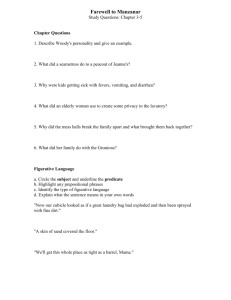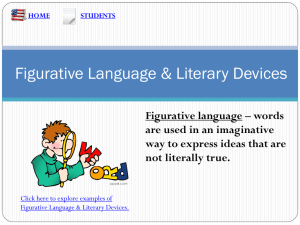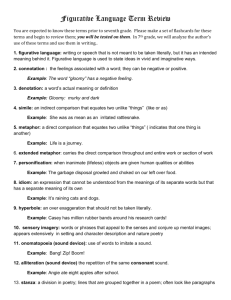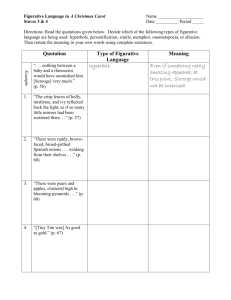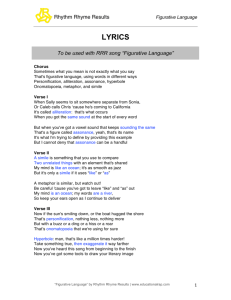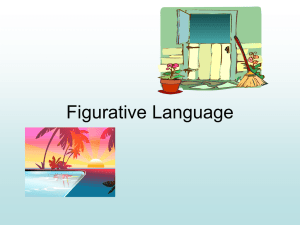Grade - Southwest Plains Regional Service Center
advertisement
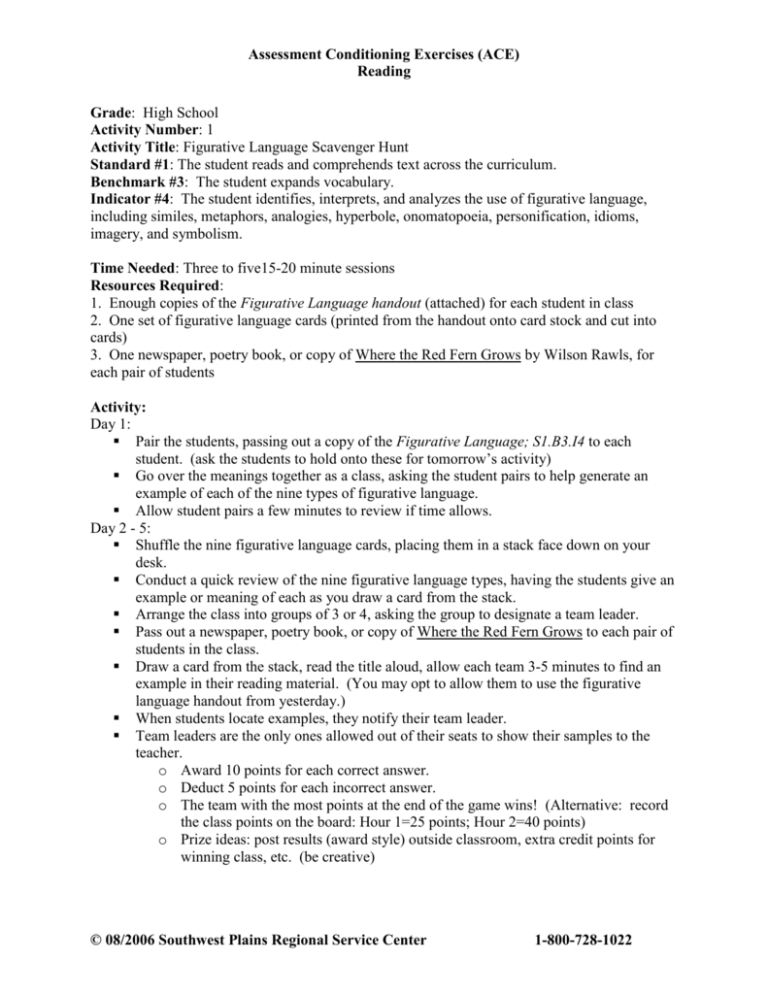
Assessment Conditioning Exercises (ACE) Reading Grade: High School Activity Number: 1 Activity Title: Figurative Language Scavenger Hunt Standard #1: The student reads and comprehends text across the curriculum. Benchmark #3: The student expands vocabulary. Indicator #4: The student identifies, interprets, and analyzes the use of figurative language, including similes, metaphors, analogies, hyperbole, onomatopoeia, personification, idioms, imagery, and symbolism. Time Needed: Three to five15-20 minute sessions Resources Required: 1. Enough copies of the Figurative Language handout (attached) for each student in class 2. One set of figurative language cards (printed from the handout onto card stock and cut into cards) 3. One newspaper, poetry book, or copy of Where the Red Fern Grows by Wilson Rawls, for each pair of students Activity: Day 1: Pair the students, passing out a copy of the Figurative Language; S1.B3.I4 to each student. (ask the students to hold onto these for tomorrow’s activity) Go over the meanings together as a class, asking the student pairs to help generate an example of each of the nine types of figurative language. Allow student pairs a few minutes to review if time allows. Day 2 - 5: Shuffle the nine figurative language cards, placing them in a stack face down on your desk. Conduct a quick review of the nine figurative language types, having the students give an example or meaning of each as you draw a card from the stack. Arrange the class into groups of 3 or 4, asking the group to designate a team leader. Pass out a newspaper, poetry book, or copy of Where the Red Fern Grows to each pair of students in the class. Draw a card from the stack, read the title aloud, allow each team 3-5 minutes to find an example in their reading material. (You may opt to allow them to use the figurative language handout from yesterday.) When students locate examples, they notify their team leader. Team leaders are the only ones allowed out of their seats to show their samples to the teacher. o Award 10 points for each correct answer. o Deduct 5 points for each incorrect answer. o The team with the most points at the end of the game wins! (Alternative: record the class points on the board: Hour 1=25 points; Hour 2=40 points) o Prize ideas: post results (award style) outside classroom, extra credit points for winning class, etc. (be creative) © 08/2006 Southwest Plains Regional Service Center 1-800-728-1022 Assessment Conditioning Exercises (ACE) Reading Simile Metaphor Analogy A comparison of two unlike objects or concepts, generally using words such as like or as. A figure of speech in which two unlike objects or concepts are compared without using like or as. A comparison of two or more similar objects or concepts in which it is implied that since these objects or concepts are alike in some respects, they must be alike in other ways as well. Hyperbole Onomatopoeia Personification An intentionally exaggerated figure of speech, such as I have told you a million times. Words of which the sounds suggests meaning, such as the words pow or clank. A metaphorical figure of speech in which animals, ideas, things, etc., are represented as having human qualities, such as The sky cried great tears. Idiom Imagery Symbolism An expression that does not mean what it literally says, such as to have the upper hand has nothing to do with hands. They are peculiar to a particular language and cannot be interpreted literally. The process or result of forming mental images while reading or listening to a story, perceiving, etc. The use of language to create sensory impressions such as the imagery of the phrase such sweet sorrow. The use of one thing to suggest something else: specifically, the use of symbols to represent abstract ideas in concrete ways, such as the Statue of Liberty, American flag, etc. Figurative Language; S1.B3.I4 © 08/2006 Southwest Plains Regional Service Center 1-800-728-1022

